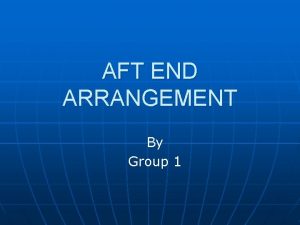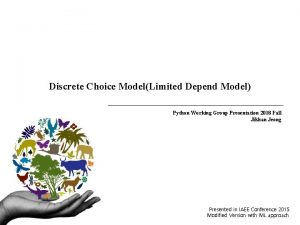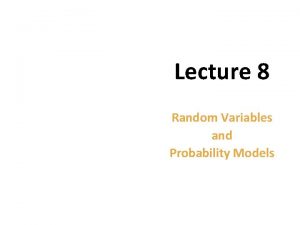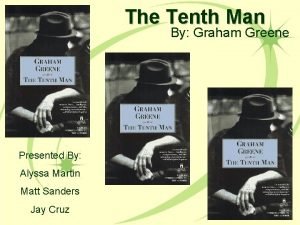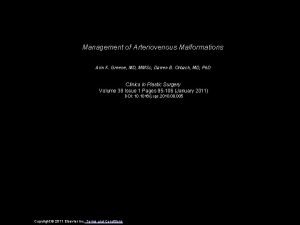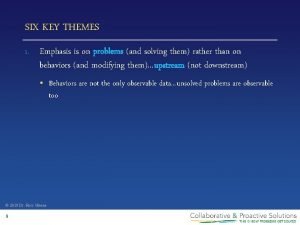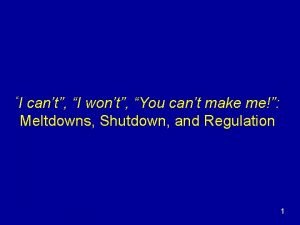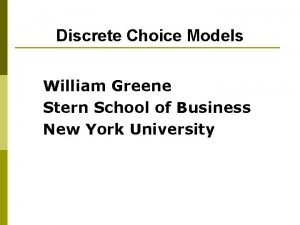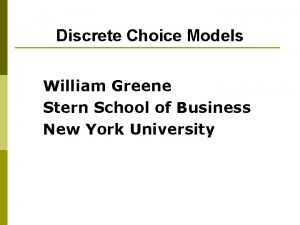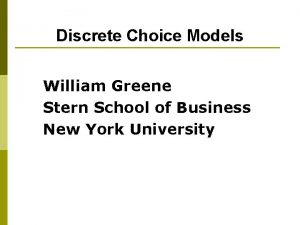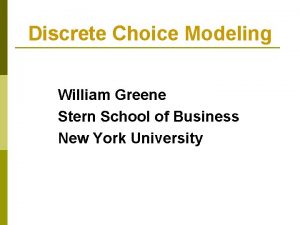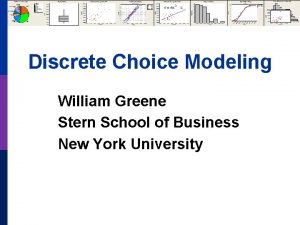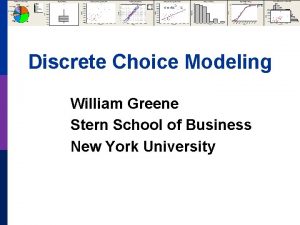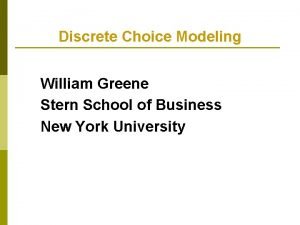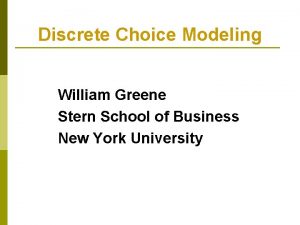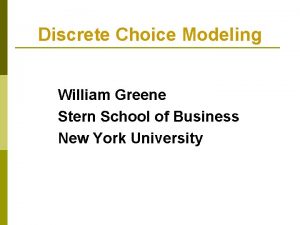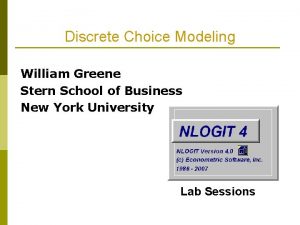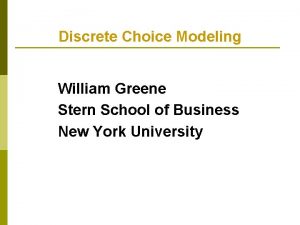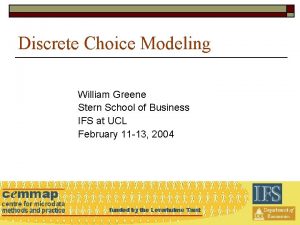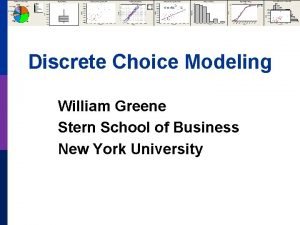Discrete Choice Models William Greene Stern School of














- Slides: 14

Discrete Choice Models William Greene Stern School of Business New York University

Part 12 Modeling Heterogeneity

Several Types of Heterogeneity p Observational: Observable differences across choice makers p Choice strategy: How consumers make decisions. (E. g. , omitted attributes) p Structure: Model frameworks p Preferences: Model ‘parameters’

Attention to Heterogeneity p p Modeling heterogeneity is important Attention to heterogeneity – an informal survey of four literatures Levels Scaling Economics ● None Education ● None Marketing ● Much Transport ● Extensive

Heterogeneity in Choice Strategy Consumers avoid ‘complexity’ p n n p Lexicographic preferences eliminate certain choices choice set may be endogenously determined Simplification strategies may eliminate certain attributes Information processing strategy is a source of heterogeneity in the model.

“Structural Heterogeneity” p Marketing literature p Latent class structures n n Yang/Allenby - latent class random parameters models Kamkura et al – latent class nested logit models with fixed parameters

Accommodating Heterogeneity p Observed? p Unobserved? Enter in the model in familiar (and unfamiliar) ways. Takes the form of randomness in the model.

Heterogeneity and the MNL Model p Limitations of the MNL Model: n n p IID IIA Fundamental tastes are the same across all individuals How to adjust the model to allow variation across individuals? n n Full random variation Latent clustering – allow some variation

Observable Heterogeneity in Utility Levels Choice, e. g. , among brands of cars xitj = attributes: price, features zit = observable characteristics: age, sex, income

Observable Heterogeneity in Preference Weights

Heteroscedasticity in the MNL Model • Motivation: Scaling in utility functions • If ignored, distorts coefficients • Random utility basis Uij = j + ’xij + ’zi + j ij i = 1, …, N; j = 1, …, J(i) F( ij) = Exp(- ij)) now scaled • Extensions: Relaxes IIA Allows heteroscedasticity across choices and across individuals

‘Quantifiable’ Heterogeneity in Scaling wit = observable characteristics: age, sex, income, etc.

Modeling Unobserved Heterogeneity p Modeling individual heterogeneity n n n p Latent class – Discrete approximation Mixed logit – Continuous The mixed logit model (generalities) Data structure – RP and SP data n n Induces heterogeneity Induces heteroscedasticity – the scaling problem

Heterogeneity p Modeling observed and unobserved individual heterogeneity n n n Latent class – Discrete variation Mixed logit – Continuous variation The generalized mixed logit model
 Cruiser stern and transom stern
Cruiser stern and transom stern Discrete choice model python
Discrete choice model python Discrete probability models
Discrete probability models Good choice or bad choice
Good choice or bad choice Kylie greene
Kylie greene The tenth man graham greene summary
The tenth man graham greene summary Difference between stokes and green's theorem
Difference between stokes and green's theorem Who wrote the destructors
Who wrote the destructors Linda r greene
Linda r greene Journey without maps
Journey without maps Robert greene shakespeare
Robert greene shakespeare Arin greene
Arin greene Linda r greene
Linda r greene Problem solving plan plan b flowchart
Problem solving plan plan b flowchart Ross greene plan a b c
Ross greene plan a b c
